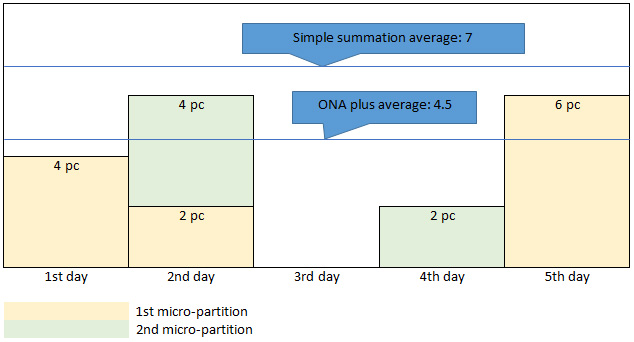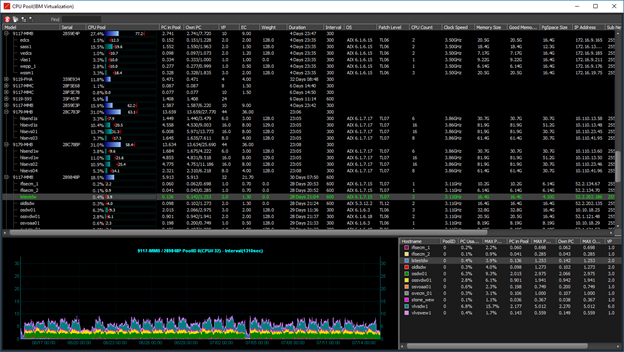As useful as nmon is, System engineers attempting to analyze CPU pool with nmon logs will have a hard time due to the following:
- The Micro-partitions’ nmon logs in same CPU pool that are needed and used for analysis are not time-synchronized.
- Not all micro-partitions are guaranteed to be active for the time periods under consideration. Some micro-partitions may be off for certain periods.
- Depending on the configuration, nmon may not collect the “used pool CPU%” properly.
If you don’t provide for these gotchas; you will misread the current status of the CPU pool. (derived from simple summation of pc value of micro-partitions.) Not surprisingly, having to deal with these considerations are a big headache for system administrators/engineers.
To overcome these problems of analyzing CPU pool(IBM CPU Virtualization) correctly, ONA plus provide the following enhanced features to work with standard nmon logs:
- An encompassing time slot (period) is automatically chosen in order to include every nmon log of every member micro-partition of the CPU pool.
– This time slot is larger, at the very least, than the biggest interval of all these micro-partitions.
- To make it convenient for the engineer/administrator, we highlight three factors that affect pc value: “effective duration”, “own pc” and “pc in pool”. These three factors are defined as follows:
* Effective duration (of pool): whole period. In case of pool, the period not used by any micro-partitions is not included.
* Own pc: Average pc based on period of each micro-partition. (Finally, normal average is Own pc)
* pc in pool: Average pc based on effective duration.
Example – Encompassing time period/slot is 1 day.
In this case where the total period is 5 days, the 1st micro-partition was active on the first, second, and the last days (3 time slots), and the 2nd micro-partition was active on the second and fourth day (2 time slots).
During uptime, the 1st micro-partition used 4, 2, 6 pc for the corresponding days; and the 2nd micro-partition used average 4 and 2 pc for the corresponding days.
The ONA plus methodology is illustrated as below:

* Effective duration of pool: whole period. In case of pool, the period not used by any micro-partitions is not included.
* Own pc: Average pc based on period of each micro-partition. (Finally, normal average is Own pc)
* pc in pool: Average pc based on effective duration.
CPU pool

When the simple summation method is used, the average pc of pool yields:
(1st micro-partition average pc 4) + (2nd micro-partition average pc 3) = 7.
The ONA Plus view below embodies the CPU pools methodology in the chart, and also promotes easier management.
Note that these chart results are derived from standard nmon logs. (no manual re-work or manipulation)


